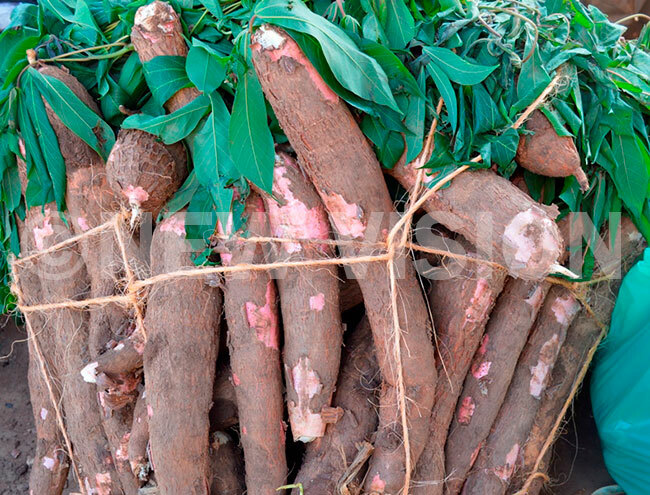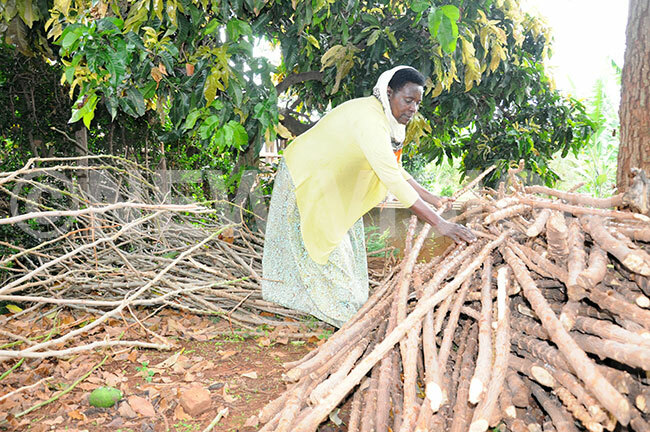Cassava: a hidden crop in Isingiro
The farm-gate price of a 100kg of cassava is currently between sh50,000 and sh80,000. The price increases to sh90,000 when the farmers find the buyers in Mbarara town.
AGRICULTURE
Seperanza Kenyena wakes up at 6:00 am every day to attend to her cassava plantation in Rwakashaka, Isingiro district.
Two years ago, Kenyena used to despise cultivation in favour of cattle rearing. But today, the cassava plantation, sitting on 10 acres is her major means of livelihood.
High returns realised
In a week, Kenyena harvests a full pick-up of cassava. Consequently, she quit rearing many animals and growing crops to concentrate on cassava farming.
She says cassava has virtually replaced their indigenous traditional food (matooke).
The farm-gate price of a 100kg of cassava is currently between sh50,000 and sh80,000. The price increases to sh90,000 when the farmers find the buyers in Mbarara town.
Kenyena, who is also a local leader, says the prices go up to sh100,000 during times of scarcity. She is one of the hundreds of cassava farmers in the district, who earn a living from the crop.
On a good day, Kenyena can earn as much as sh500,000.
Ignatius Katto, an agricultural leader says in the district, farmers have been able to realise high profits from their cassava gardens because the soils are fertile and favour the crop.
Isingiro, which is located in western Uganda, has about 486,360 people, according to the National Population census estimates.
Teamwork key for success
Katto says farmers have formed groups and drafted strict regulations governing them.
"In Kabingo village, for example, farmers have by-laws guiding them. A farmer who fails to adhere to them is fined,'' he notes.
The farmers grow cassava under different co-operative societies. They have also formed their own savings and credit co-operative societies.
The farmers also ensure that all farmers apply the new farming methods such as pruning and water flow control while adhering to the advice given by the National Agricultural Advisory Services (NAADS) officials.

These officials also provide cassava sticks to those who are willing to start growing the crops.
Katto says farmers monitor themselves and evaluate the productivity of their crops to ensure progress.
He adds that through their groups, they have learnt how to market their cassava and set uniform prices to avoid exploitation.
Cassava says the farmers fight cassava diseases as a group, citing the cassava mosaic disease that had attacked Kabingo two years ago but has tremendously reduced today.
"When we taught the farmers how to deal with the affected plants, they would do it as a group in their gardens because they are near each other," Katto says.
He reveals that the farmers in Kabingo village earn about sh100m in a month from cassava sales.
Alex Gamukama, one of the district leaders, attributes the farmers' success to the district agricultural extension workers who monitor and offer advice to farmers on the best practices.
He also says the groups formed by farmers act as a bargaining tool. "There is competition among farmers' groups and the farmers themselves.
This has encouraged many to produce more cassava so as to get more money.'' Gamukama also notes that SACCOS have helped the farmers get money to access chemicals required to fight crop diseases.
Challenges
Kenyena says that the major challenge of growing cassava s is the farmers' low adaption rate to modern farming methods.
"Some farmers still believe that traditional methods of farming are better than modern ones. Some farmers, during planting, cover the plants up to the stem (about four feet) instead of the recommended two feet from the ground," she notes.
Facts about cassava
Cassava is among the high priority commodity crops on the National Agricultural Research Organisation's(NARO) research agenda.
The crop was introduced in Uganda by Arab traders between 1862 and 1875.
Its cultivation greatly increased between 1931 and 1933. The cash crop also ranks second among the major food crops regarded as the most important cheap source of staple food.

Its flexibility in the farming and food systems, ability to do well in marginally stressed environments and apparent resistance/ tolerance to pests and diseases, particularly locusts, encouraged its rapid cultivation.
It is presently grown throughout the country. A total of 3.5 million metric tonnes of the crop were produced from 450,000 hectares of land until 1990 when a mosaic epidemic devastated the crop.
The Government recently announced that cassava will be adopted as the main hunger and famine food crop in Uganda.
A spacing of 0.75mx0.75m to 2mx2m while planting is important. Cuttings should be at least 30-40cm in length. "Plant mature cuttings."
In an acre, she plants three 100kgbags of cuttings.
To make more money from cassava growing; one has to process it into edible forms such as high-quality flour, which can be mixed with millet, animal feeds and starch.
Sometimes after harvesting the cassava, they peel, dry and crush the tubers before packing the flour.
One acre of cassava gives her 1-5 tonnes, depending on the season.